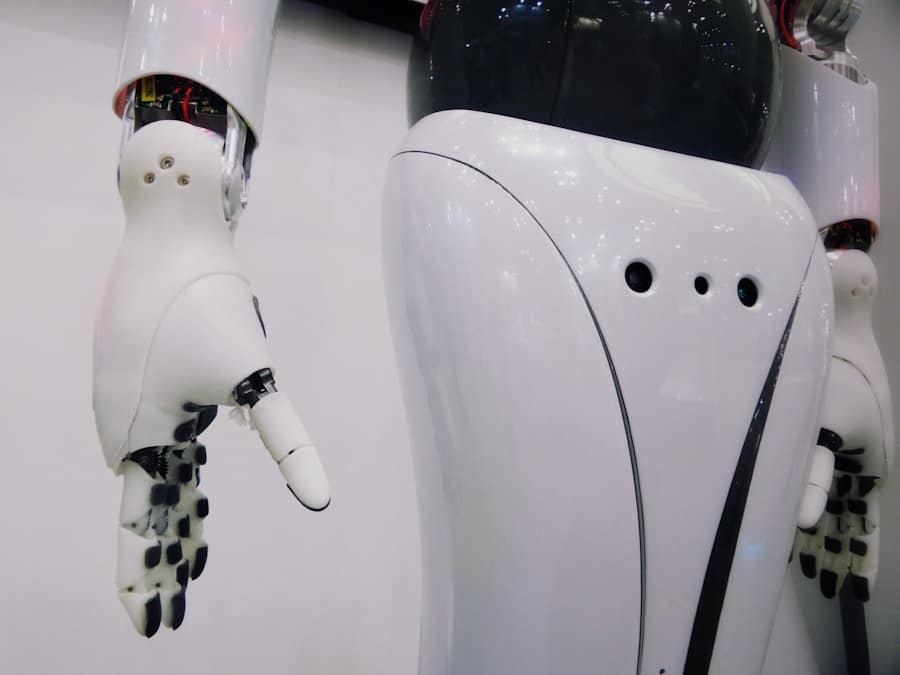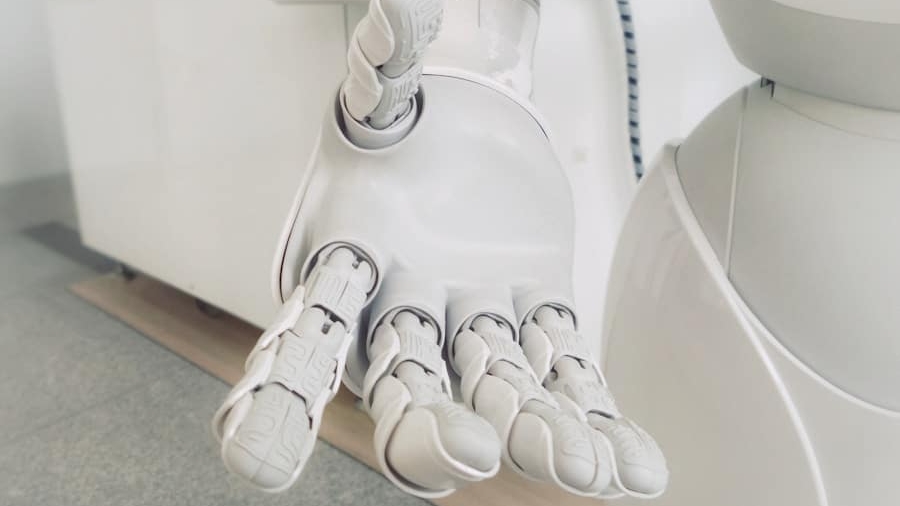Gesture recognition has emerged as a pivotal technology in the realm of home robotics, enabling machines to interpret human movements and respond accordingly. This capability is not merely a novelty; it represents a significant leap toward creating more intuitive and user-friendly robotic systems. As households increasingly adopt smart technologies, the demand for seamless interaction between humans and machines has surged.
Gesture recognition serves as a bridge, allowing users to control devices through natural movements rather than relying solely on traditional interfaces like buttons or touchscreens. The evolution of gesture recognition technology has been fueled by advancements in computer vision, machine learning, and artificial intelligence. Home robots equipped with these capabilities can recognize a variety of gestures, from simple hand waves to complex body movements.
As we delve deeper into the intricacies of gesture recognition, it becomes evident that the integration of AI is crucial for refining this technology and expanding its applications in everyday life.
Key Takeaways
- Gesture recognition in home robots is an emerging technology that allows robots to interpret and respond to human gestures.
- AI plays a crucial role in advancing gesture recognition technology by enabling robots to learn and adapt to different gestures and movements.
- AI algorithms improve home robots’ ability to interpret and respond to gestures by analyzing and recognizing patterns in human movements.
- AI-enhanced gesture recognition has a significant impact on user experience, making human-robot interaction more intuitive and seamless.
- Despite its potential, AI in gesture recognition for home robots also faces challenges and limitations, such as accuracy and privacy concerns.
The Role of AI in Advancing Gesture Recognition Technology
Artificial intelligence plays a transformative role in the development of gesture recognition systems, significantly enhancing their accuracy and efficiency. At the core of this advancement lies machine learning, which allows robots to learn from vast datasets of human gestures. By analyzing these datasets, AI algorithms can identify patterns and nuances in human movements, enabling robots to distinguish between similar gestures and respond appropriately.
This capability is essential for creating a robust gesture recognition system that can operate effectively in diverse environments and contexts. Moreover, AI facilitates real-time processing of visual data captured by cameras or sensors embedded in home robots. Traditional gesture recognition systems often struggled with latency issues, leading to delays in response times that could frustrate users.
However, with the integration of AI, home robots can process visual information almost instantaneously, allowing for fluid interactions. For example, a user can wave their hand to command a robot to fetch an item, and the robot can execute the task without noticeable lag. This seamless interaction not only enhances user satisfaction but also encourages more widespread adoption of robotic technologies in domestic settings.
How AI Algorithms Improve Home Robots’ Ability to Interpret and Respond to Gestures

AI algorithms significantly enhance the ability of home robots to interpret and respond to gestures through various techniques such as deep learning and neural networks. Deep learning models are particularly effective in recognizing complex patterns within visual data, enabling robots to differentiate between various gestures with high precision. For instance, a robot may be trained to recognize not just a simple wave but also variations such as a quick flick of the wrist or a slow sweeping motion.
This level of detail allows for more nuanced interactions between humans and robots. Furthermore, AI algorithms can adapt to individual users over time, learning their unique gestures and preferences. This personalization aspect is crucial for improving user experience, as it allows robots to become more attuned to the specific ways in which different people communicate.
For example, if a family member tends to use a particular hand signal to indicate “stop,” the robot can learn this gesture and prioritize it in its recognition system. This adaptability not only enhances the robot’s functionality but also fosters a sense of companionship and understanding between humans and machines.
The Impact of AI-Enhanced Gesture Recognition on User Experience
The integration of AI-enhanced gesture recognition into home robots has profoundly transformed user experience by making interactions more intuitive and engaging. Users no longer need to rely on cumbersome remote controls or complicated apps; instead, they can communicate with their robots through natural gestures that feel more organic. This shift towards gesture-based control aligns with human tendencies to use body language as a primary means of communication, thereby reducing the learning curve associated with new technologies.
Moreover, the immediacy of gesture recognition contributes to a more satisfying user experience. When users can simply point or wave to command their robots, it creates a sense of fluidity in interactions that enhances overall satisfaction. For instance, imagine a scenario where a user is cooking in the kitchen and needs assistance from a robot; instead of stopping to grab a phone or remote, they can simply gesture for help while continuing their tasks.
This hands-free interaction not only saves time but also allows users to maintain focus on their activities, ultimately leading to a more harmonious coexistence with technology.
Challenges and Limitations of AI in Gesture Recognition for Home Robots
Despite the promising advancements in AI-enhanced gesture recognition, several challenges and limitations persist that hinder its widespread implementation in home robots. One significant challenge is the variability of human gestures across different cultures and contexts. A gesture that is universally understood in one culture may have entirely different meanings elsewhere.
This cultural diversity poses a challenge for developers aiming to create universally applicable gesture recognition systems that cater to a global audience. Additionally, environmental factors can impact the effectiveness of gesture recognition technology. Variations in lighting conditions, background clutter, and even the physical space where interactions occur can affect how well a robot perceives and interprets gestures.
For instance, a robot may struggle to recognize gestures accurately in dim lighting or when there are multiple people moving around simultaneously. These limitations necessitate ongoing research and development efforts to create more robust systems capable of functioning effectively in diverse real-world scenarios.
Future Developments and Potential Applications of AI-Enhanced Gesture Recognition in Home Robots

Looking ahead, the future of AI-enhanced gesture recognition in home robots appears promising, with numerous potential developments on the horizon. One area ripe for exploration is the integration of multimodal interaction systems that combine gesture recognition with voice commands and facial recognition. Such systems would allow users to interact with their robots using multiple forms of communication simultaneously, creating an even more seamless experience.
For example, a user could issue a voice command while simultaneously gesturing toward an object, enabling the robot to understand context more effectively. Moreover, advancements in hardware technology will likely lead to more sophisticated sensors and cameras capable of capturing finer details of human movements. As these technologies evolve, home robots will become increasingly adept at recognizing subtle gestures that convey complex commands or emotions.
This capability could pave the way for applications beyond simple task execution; for instance, robots could be programmed to respond empathetically to users’ emotional states based on their gestures and body language.
Ethical Considerations and Privacy Concerns in AI-Enhanced Gesture Recognition for Home Robots
As with any technology that involves data collection and analysis, ethical considerations and privacy concerns are paramount when discussing AI-enhanced gesture recognition in home robots. The ability of these devices to continuously monitor users’ movements raises questions about consent and data security. Users may be uncomfortable with the idea that their gestures are being recorded or analyzed by machines, especially if this data is stored or shared without their explicit permission.
Furthermore, there is the potential for misuse of gesture recognition technology if it falls into the wrong hands. For instance, malicious actors could exploit vulnerabilities in gesture recognition systems to gain unauthorized access to users’ homes or personal information. To mitigate these risks, developers must prioritize transparency and security in their designs, ensuring that users are informed about how their data is used and providing robust safeguards against unauthorized access.
The Promising Future of AI-Enhanced Gesture Recognition in Home Robots
The landscape of home robotics is rapidly evolving, driven by advancements in AI-enhanced gesture recognition technology. As we continue to explore the potential applications and implications of this technology, it becomes clear that it holds significant promise for transforming how we interact with machines in our daily lives. By enabling more intuitive communication through gestures, home robots can become valuable companions that enhance our quality of life.
While challenges remain—ranging from cultural differences in gesture interpretation to ethical concerns regarding privacy—the ongoing development of AI algorithms and sensor technologies will likely address many of these issues over time. As we look toward the future, it is essential for developers, researchers, and policymakers to collaborate on creating systems that are not only effective but also ethical and secure. The journey toward fully realizing the potential of AI-enhanced gesture recognition in home robots is just beginning, but its implications for our homes and lives are profound and far-reaching.
In addition to enhancing gesture recognition in home robots, AI technology is also revolutionizing video creation with the best AI video generator software available today. This software allows users to easily create professional-looking videos using artificial intelligence algorithms. For those interested in digital art, the best tablet for drawing is a must-have tool that combines AI technology with precision drawing capabilities. Furthermore, individuals looking to launch a website can benefit from the best shared hosting services in 2023, which leverage AI to provide reliable and efficient hosting solutions. Check out this article for more information on how AI is transforming various industries.
FAQs
What is gesture recognition in home robots?
Gesture recognition in home robots is the ability of the robot to interpret and respond to human gestures. This technology allows users to control and interact with the robot using hand movements, body language, or facial expressions.
How is AI enhancing gesture recognition in home robots?
AI is enhancing gesture recognition in home robots by enabling the robots to accurately interpret and respond to a wider range of gestures. AI algorithms can analyze and learn from large datasets of human gestures, allowing the robots to understand and respond to gestures more effectively.
What are the benefits of AI-enhanced gesture recognition in home robots?
The benefits of AI-enhanced gesture recognition in home robots include improved user experience, increased accessibility for individuals with limited mobility or dexterity, and the ability to control the robot from a distance without the need for physical remote controls.
What are some potential applications of AI-enhanced gesture recognition in home robots?
Some potential applications of AI-enhanced gesture recognition in home robots include controlling smart home devices, playing interactive games, assisting individuals with disabilities, and providing entertainment and companionship.


Add a Comment